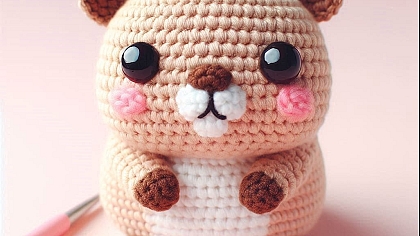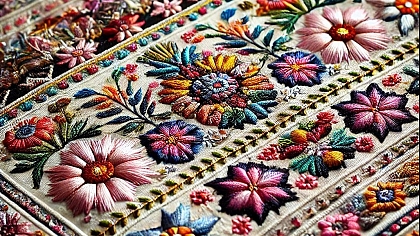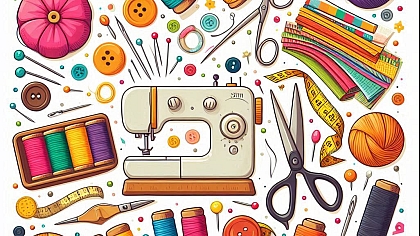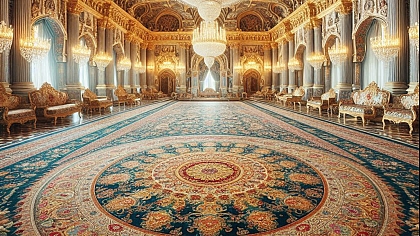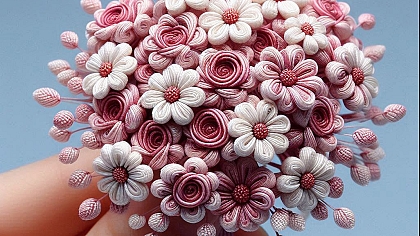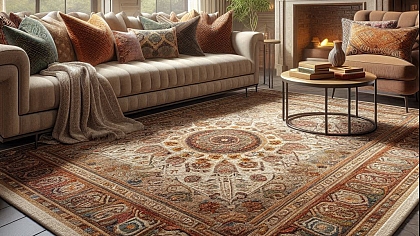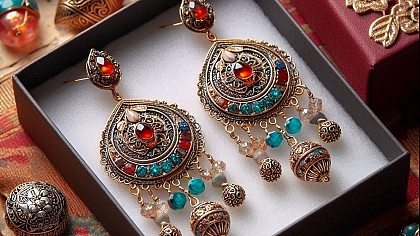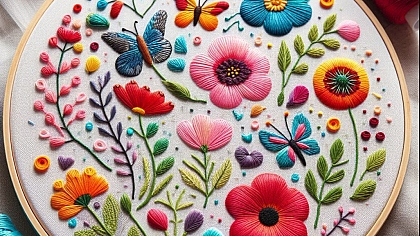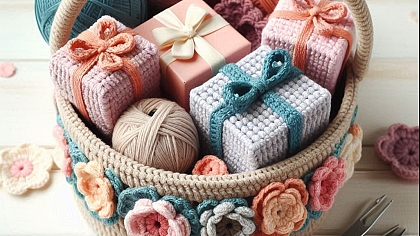
Unravelling the Threads: The History of Crochet
Crochet, a craft that involves creating fabric from yarn or thread using a hooked needle, is cherished worldwide for its beauty, versatility, and accessibility. Though often overshadowed by its textile cousins, knitting and weaving, crochet boasts a distinct identity rooted in diverse cultures and historical contexts. This craft is not merely a pastime but a reflection of social, economic, and artistic developments throughout history.
The allure of crochet lies in its simplicity and the infinite possibilities it offers. With just a hook and some yarn, one can create everything from delicate lace doilies to robust afghans, from fashionable garments to whimsical toys. Its appeal spans generations and geographies, allowing practitioners to express creativity and connect with a rich tapestry of tradition.
Origins and Early History

The exact origins of crochet are shrouded in mystery, with little concrete evidence to pinpoint when and where it first emerged. However, some historians suggest that crochet-like techniques may have been used in early civilizations. For example, ancient artifacts from the Middle East, South America, and China exhibit a similar looping technique that might have influenced early crochet methods.
One theory posits that crochet evolved from a form of embroidery known as "tambour" work, popular in Europe during the 18th century. Tambour work involved stretching fabric over a frame and creating chain stitches with a hooked needle, a technique that bears a striking resemblance to crochet. By the early 19th century, crochet had become a standalone craft, with patterns and techniques spreading across Europe.
Crochet in the 19th Century
The 19th century was a pivotal era for crochet, particularly in Europe. During this time, the craft gained immense popularity, largely due to its accessibility and the relatively low cost of materials. In Ireland, crochet became a vital source of income during the Great Irish Famine (1845-1852). Irish women created intricate lace patterns, known as "Irish crochet," which were sold throughout Europe and America. These delicate pieces often mimicked more expensive lace and became highly sought after.
Victorian England also saw a surge in crochet's popularity. Queen Victoria herself was known to crochet, and her endorsement helped elevate the craft's status. Pattern books and crochet magazines flourished, making it easier for enthusiasts to learn new techniques and share their creations. The intricate doilies, tablecloths, and clothing from this era are testaments to the skill and creativity of Victorian crocheters.
The 20th Century
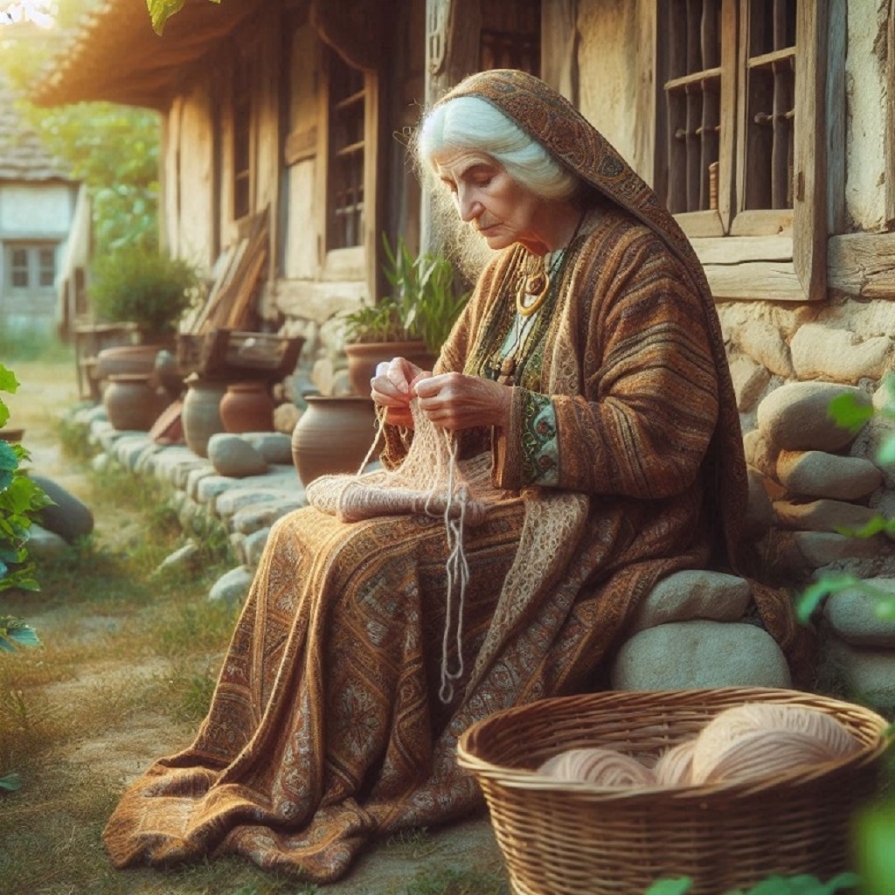
The 20th century brought significant changes to the world of crochet. In the early decades, crochet patterns became more accessible, thanks to the proliferation of print media. The craft was no longer confined to the elite or those with access to specialized knowledge; it became a household hobby.
The 1920s and 1930s saw crochet being used extensively in fashion. Flapper dresses often featured crochet embellishments, and stylish accessories like handbags and hats were popular among the fashion-forward. However, the outbreak of World War II led to a decline in leisure activities, including crochet, as materials were rationed and priorities shifted.
The post-war era, particularly the 1960s and 1970s, witnessed a revival of crochet, driven by the counterculture movement. The bohemian aesthetic embraced handmade items, and crochet became synonymous with the era's free-spirited fashion. Colorful granny square blankets, vests, and shawls became iconic symbols of the time.
Crochet in Contemporary Times
Today, crochet enjoys a vibrant resurgence, fueled by a renewed interest in handmade crafts and the DIY (do-it-yourself) movement. The advent of the internet and social media has played a crucial role in this revival, providing a platform for crocheters to connect, share patterns, and showcase their work. Online communities, blogs, and video tutorials have made learning crochet more accessible than ever before.
Modern crochet is characterized by its diversity and innovation. Crocheters are pushing the boundaries of the craft, experimenting with new techniques, materials, and applications. From intricate lacework to bold, chunky designs, contemporary crochet reflects a blend of tradition and modernity. Sustainable and ethical fashion movements have also embraced crochet, recognizing its potential for creating eco-friendly and unique garments.
The Cultural Significance of Crochet

Crochet holds a special place in various cultures around the world. In many communities, it is more than just a craft; it is a cultural heritage passed down through generations. For instance, in the Philippines, crochet is often taught to young girls by their elders, ensuring that the tradition continues. Similarly, in Eastern Europe, intricate crochet lace is a common feature of traditional clothing and home decor.
In the Caribbean, particularly in Jamaica, crochet is intertwined with the vibrant Rastafarian culture. The iconic crochet tam, a colorful hat, is a symbol of Rastafarian identity and pride. Each piece often incorporates the red, gold, and green colors of the Rastafarian flag, representing the Ethiopian monarchy, the earth, and the blood of martyrs, respectively.
Crochet's enduring appeal lies in its versatility, accessibility, and the sense of community it fosters. From its enigmatic beginnings to its current status as a beloved global craft, crochet continues to inspire creativity and connect people across cultures and generations. Whether as a practical skill, an artistic expression, or a cherished tradition, crochet remains a thread that binds us to our past while allowing us to craft a colorful and imaginative future.

